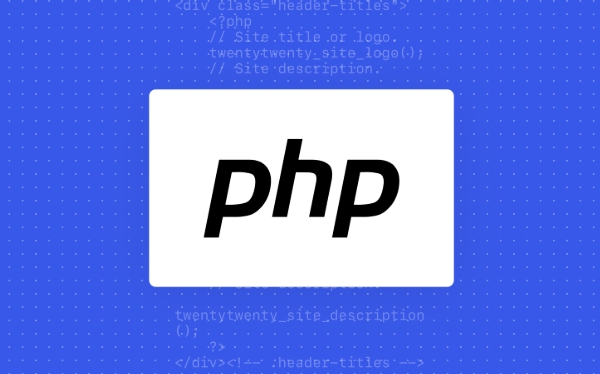 Backend Development
Backend Development
 PHP Tutorial
PHP Tutorial
 Efficiently Updating Array Values by Key in Associative Arrays
Efficiently Updating Array Values by Key in Associative Arrays
Efficiently Updating Array Values by Key in Associative Arrays
Use direct key assignment for O(1) updates. 2. Check key existence only when necessary to avoid overhead. 3. Batch updates using spread or Object.assign for efficiency. 4. Prefer Map over plain objects for frequent updates. 5. Avoid inefficient full-array reprocessing when direct updates suffice. Always leverage fast key-based access for optimal performance.

When working with associative arrays (also known as dictionaries, hash maps, or objects in various languages), efficiently updating values by key is a common task. The performance and clarity of your update logic depend on the programming language, data size, and access patterns. Below are key strategies and best practices to efficiently update array values by key.

1. Use Direct Key Assignment (O(1) Access)
The most efficient way to update a value in an associative array is direct key assignment, which typically runs in constant time O(1).
Example (JavaScript):

const userScores = { alice: 85, bob: 90 };
userScores.alice = 95; // Direct update
// Or using bracket notation
userScores['alice'] = 95;Example (PHP):
$userScores = ['alice' => 85, 'bob' => 90]; $userScores['alice'] = 95;
This method is optimal because associative arrays are designed for fast key-based lookups and updates.

2. Check Key Existence Only When Necessary
Avoid unnecessary hasOwnProperty or isset checks if you're sure the key exists or if overwriting is acceptable.
- When updating existing keys: Skip the check.
- When adding or updating conditionally: Check first.
Efficient update (no check):
userScores['charlie'] = 78; // Adds or overwrites
Conditional update (with check):
if (userScores.hasOwnProperty('diana')) {
userScores['diana'] = 10;
}Only use checks when logic depends on key presence — they add overhead.
3. Batch Updates to Minimize Operations
If you need to update multiple keys, avoid repeated individual operations in loops when possible. Instead, merge objects or use bulk operations.
JavaScript (using spread or Object.assign):
const updates = { alice: 95, bob: 92, charlie: 88 };
const updatedScores = { ...userScores, ...updates };Or in-place:
Object.assign(userScores, updates);
This is more efficient than multiple separate assignments in a loop, especially with many keys.
4. Use Map for Frequent Updates (in JavaScript)
If you're doing frequent insertions, deletions, or updates — especially with non-string keys — consider using Map instead of plain objects.
const userScores = new Map();
userScores.set('alice', 85);
userScores.set('alice', 95); // Efficient updateMap guarantees O(1) average update time and performs better than objects in high-write scenarios.
5. Avoid Rebuilding Arrays Unnecessarily
Don’t filter or map over the entire array just to update one value. For example, don’t do this:
// ❌ Inefficient userScores = Object.entries(userScores).map(([k, v]) => [k, k === 'alice' ? 95 : v] ); userScores = Object.fromEntries(userScores);
This is O(n) and wasteful when a direct update suffices.
Summary of Best Practices
- ✅ Use direct key assignment:
obj[key] = value - ✅ Prefer
Mapfor dynamic or high-frequency updates - ✅ Batch updates with
Object.assignor spread syntax - ✅ Skip key checks unless logic requires them
- ❌ Avoid full-array reprocessing to update one value
Efficiency comes from leveraging the associative array’s core strength: fast key-based access. Stick to direct updates and avoid unnecessary iterations or object rebuilding.
Basically, if you know the key, go straight to it.
The above is the detailed content of Efficiently Updating Array Values by Key in Associative Arrays. For more information, please follow other related articles on the PHP Chinese website!

Hot AI Tools

Undress AI Tool
Undress images for free

Undresser.AI Undress
AI-powered app for creating realistic nude photos

AI Clothes Remover
Online AI tool for removing clothes from photos.

Clothoff.io
AI clothes remover

Video Face Swap
Swap faces in any video effortlessly with our completely free AI face swap tool!

Hot Article

Hot Tools

Notepad++7.3.1
Easy-to-use and free code editor

SublimeText3 Chinese version
Chinese version, very easy to use

Zend Studio 13.0.1
Powerful PHP integrated development environment

Dreamweaver CS6
Visual web development tools

SublimeText3 Mac version
God-level code editing software (SublimeText3)
 Updating a PHP Array Based on Values from Another Array
Aug 02, 2025 am 12:51 AM
Updating a PHP Array Based on Values from Another Array
Aug 02, 2025 am 12:51 AM
Use array_merge() to simply overwrite the value of the second array to update the original array; 2. Use the union operator ( ) to retain the original array value and add only missing keys (suitable for setting the default value); 3. Fine-grained control can be achieved through foreach combined with conditions, such as updating only non-null values; 4. For nested arrays, array_replace_recursive() should be used to achieve deep updates; 5. When updating, array_key_exists() or isset() should always be used to safely check the existence of the keys to avoid errors; these methods cover the main scenarios of updating arrays based on another array in PHP, and appropriate methods should be selected according to the data structure and logic to ensure operation
 A Deep Dive into `array_walk` for Complex Array Transformations
Aug 02, 2025 pm 03:28 PM
A Deep Dive into `array_walk` for Complex Array Transformations
Aug 02, 2025 pm 03:28 PM
array_walk is a powerful function in PHP for modifying array elements in place. It is suitable for scenarios where complex transformations are required based on key names, nested structures, or external states. 1. It passes arrays and elements through references and directly modifys the original array; 2. The callback function can access keys and values and supports the third parameter passing context; 3. It can process multi-dimensional arrays in combination with recursion; 4. It is suitable for batch modification of object properties; 5. It does not return a new array, and its performance is better than array_map but is not suitable for scenarios where the original array needs to be retained. When used correctly, it performs efficiently and has a clean code in handling context-sensitive or recursive data transformations.
 Optimizing Large-Scale Array Update Operations for Memory and Speed
Aug 02, 2025 am 02:08 AM
Optimizing Large-Scale Array Update Operations for Memory and Speed
Aug 02, 2025 am 02:08 AM
Tooptimizelarge-scalearrayupdates:1.Mutatearraysinplaceinsteadofcreatingcopiesusingspreadorconcattoreducememoryusage;2.Batchupdatestominimizefunctioncalloverhead,pre-allocatearrayswhensizeisknown,andchunklargeinsertionstoavoidcallstacklimits;3.Usetyp
 Dynamic Array Modification: Adding or Updating Elements on the Fly
Aug 02, 2025 pm 03:37 PM
Dynamic Array Modification: Adding or Updating Elements on the Fly
Aug 02, 2025 pm 03:37 PM
Dynamicarraysallowruntimemodificationbyaddingorupdatingelements,withbestpracticesensuringefficiencyandsafety.1)Usepush/appendtoaddelementsattheendforoptimalperformance.2)Avoidunshift/insertormiddleinsertionswhenpossible,astheyrequireshiftingelementsa
 Advanced Techniques for Updating Multi-Dimensional PHP Arrays
Aug 03, 2025 am 06:26 AM
Advanced Techniques for Updating Multi-Dimensional PHP Arrays
Aug 03, 2025 am 06:26 AM
Userecursivefunctionstosafelytraverseandupdatenestedarrayswithunknowndepthbycreatingmissingkeysasneeded.2.Leveragearrayreferenceswiththe&operatortodirectlymodifyoriginalarrayelementswithouttriggeringcostlycopiesduringdeeptraversal.3.Implementdotn
 The Art of Immutable Array Updates Using Functional PHP
Aug 05, 2025 pm 12:30 PM
The Art of Immutable Array Updates Using Functional PHP
Aug 05, 2025 pm 12:30 PM
To realize the update of immutable arrays in PHP, it must be done by creating a new array instead of modifying the original array. 1. Avoid directly modifying the array elements. You should use array_merge() or manually copy to generate a new array; 2. Use array_merge() to perform concise immutable updates, keeping the original array unchanged and supporting the addition of new keys; 3. Use pure functions such as recursive setIn() for nested arrays to ensure that there are no side effects when the deep structure is updated; 4. Combined with functional tools such as array_map and array_filter to achieve data processing without side effects; 5. Strengthen immutability through conventions, such as treating the input array as read-only, returning a new array, and using reado in PHP8.2
 A Guide to Modifying Arrays of Objects in PHP
Aug 04, 2025 am 12:38 AM
A Guide to Modifying Arrays of Objects in PHP
Aug 04, 2025 am 12:38 AM
ArraysofobjectsinPHPcontainclassinstances,allowingdirectpropertyormethod-basedmodifications;2.Updatepropertiesusingforeachloopssinceobjectsarepassedbyreference,orusesettersforencapsulatedproperties;3.Filterobjectswitharray_filter()tocreatesubsetsbase
 Mastering In-Place Array Updates with PHP References
Aug 05, 2025 pm 04:46 PM
Mastering In-Place Array Updates with PHP References
Aug 05, 2025 pm 04:46 PM
Use PHP references to achieve in-situ updates of arrays, avoiding copy overhead and improving performance. 1. Use the & operator to create references so that the variable points to the same data, and the modification is reflected to the original array; 2. When processing nested arrays, obtain deep element references through &, and directly modify them without reassigning; 3. Use &$item in the foreach loop to modify the original array elements, but unset($item) must be unset($item) after the loop to prevent subsequent side effects; 4. You can write functions to return deep references through dynamic paths, which are suitable for configuration management and other scenarios; 5. Although references are efficient, they should be used with caution to avoid overcomplex code, ensure that the logic is clear and comments are added if necessary. Correct use of references can significantly optimize large sizes






